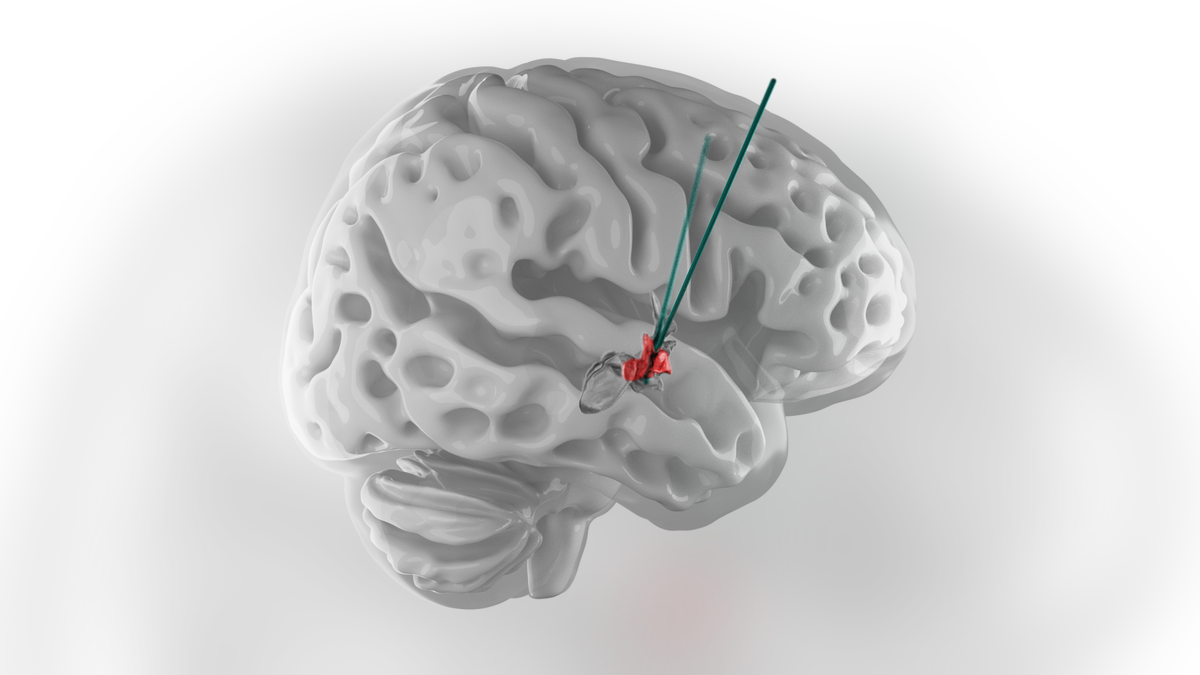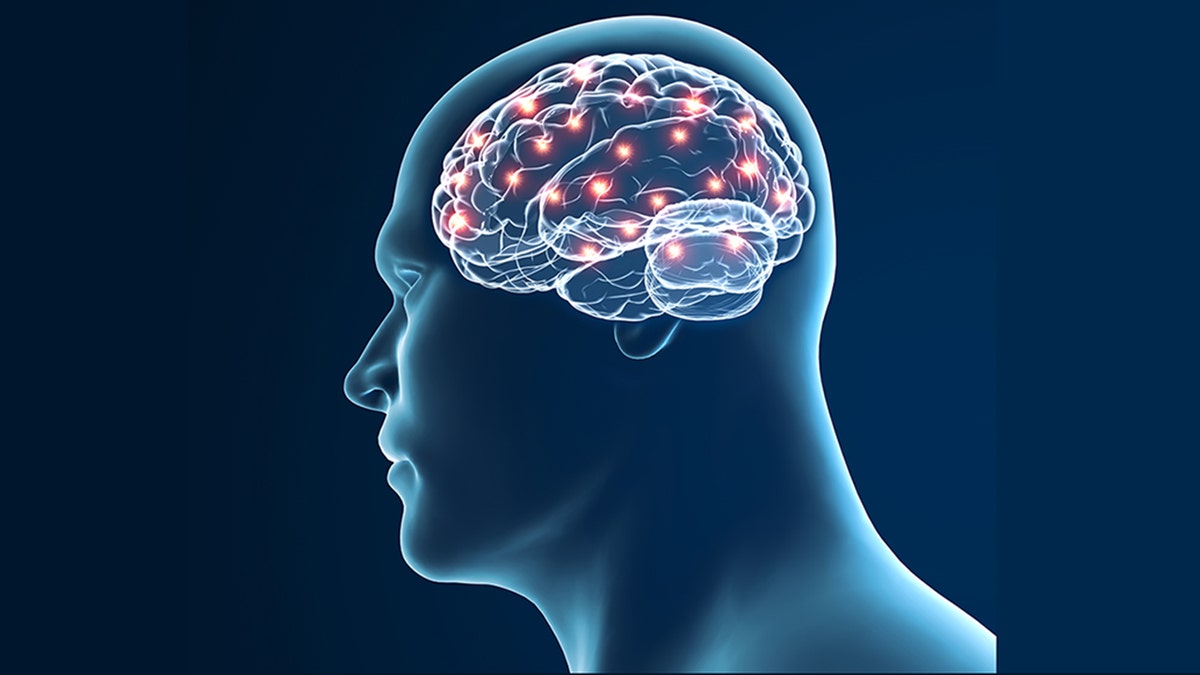New research suggests that paralyzed patients could regain some degree of movement — perhaps even walk again.
In a study led by EPFL (Swiss Federal Technology Institute of Lausanne) and Lausanne University Hospital in Switzerland, two people with spinal cord injuries received deep brain stimulation (DBS) therapy.
The therapy was applied to an “unexpected” part of the brain called the lateral hypothalamus, which has previously been associated with functions like eating and arousing from sleep.
MAN PARALYZED IN DIVING MISHAP HAS MEDICAL MIRACLE A YEAR AFTER AI-POWERED BRAIN IMPLANT
After the stimulation, the patients were able to walk without assistance and even climb stairs, according to a press release from Lausanne University Hospital.
The findings were published in the journal Nature Medicine.
One of the participants in the study was 54-year-old Wolfgang Jäger from Kappel, Austria, who experienced a spinal cord injury in 2006 that left him in a wheelchair.
After having electrodes implanted in the targeted area of his brain and receiving deep brain stimulation, he regained some lower-body mobility.
“Last year on vacation, it was no problem to walk a couple of steps down and back to the sea using the stimulation,” Jäger said in the release.
“I can also reach things in my cupboards in the kitchen.”
SPINAL CORD TREATMENT RESTORES FUNCTION FOR PARALYZED PATIENTS IN STUDY: ‘NEW HOPE’
Study author Jocelyne Bloch, neurosurgeon and professor at the Lausanne University Hospital, UNIL and EPFL, shared the immediate effects of the therapy.
“Once the electrode was in place and we performed the stimulation, the first patient immediately said, ‘I feel my legs,’” she said in the release.

“When we increased the stimulation, she said, ‘I feel the urge to walk!’ This real-time feedback confirmed we had targeted the correct region, even if this region had never been associated with the control of the legs in humans.”
“At this moment, I knew we were witnessing an important discovery of the anatomical organization of brain functions,” added Bloch.
“When we increased the stimulation, she said, ‘I feel the urge to walk!’”
The participants also reported “long-term improvement” in mobility even when the stimulation wasn’t actively being applied.
“This research highlights the unexpected role of the lateral hypothalamus, a brain region not previously associated with locomotion in humans,” lead researcher Dr. Grégoire Courtine, professor of neuroscience at EPFL and Lausanne University Hospital and co-director of the .NeuroRestore center, told Fox News Digital.
RESEARCHERS FIND SOURCES OF FOUR BRAIN DISORDERS, WHICH COULD LEAD TO NEW TREATMENTS
“Our findings show that this approach not only enhances motor abilities during stimulation, but also induces a reorganization of nerve fibers, leading to lasting improvements even in the absence of stimulation.”
DBS has traditionally been used to control tremors in people with movement disorders like Parkinson’s disease, the researchers noted.

The concept of applying it to the lateral hypothalamus is unchartered territory.
Looking ahead, the researchers hope to combine DBS with spinal implants to enable further recovery from paralysis.
“Integrating our two approaches — brain and spinal stimulation — will offer a more comprehensive recovery strategy for patients with spinal cord injuries,” added Courtine.
‘Pushing science forward’
Dr. Ann Murray, director of the Comprehensive Movement Disorder Clinic at WVU Rockefeller Neuroscience Institute in West Virginia, said the study’s results are “surprising and exciting.”
“The targeted location of the brain they were stimulating, the hypothalamus, has not historically been known to be involved in the mechanism of gait,” Murray, who was not involved in the study, told Fox News Digital.
ALZHEIMER’S PATIENT, 90, SAYS SKIING AND OTHER ACTIVITIES KEEP HIM MENTALLY SHARP
“As we continue to better understand the brain networks, it will continue to enable us to modulate areas that aren’t working correctly,” she went on.
“The brain communicates via electrical signaling, and technologies like deep brain stimulation therapy help us interface with the brain circuitry to improve and/or restore more normal connectivity.”

The potential for advancements in these types of technologies is “truly endless,” Murray said.
“I have the utmost hope that technologies like deep brain stimulation and other neuromodulation therapies will continue to advance the science in restoration of brain health for patients suffering neurologic injury.”
Potential limitations
The researchers acknowledged that there are some limitations of the research.
“This is precision medicine at its finest.”
“This therapy is only beneficial for patients with incomplete injuries, where functional neural circuits remain but are not fully utilized,” Courtine told Fox News Digital.
“For complete spinal cord injuries, only localized epidural electrical stimulation or a brain-spine interface bridge may assist in restoring functional movements.”

He also pointed out that this study is an “early-stage safety and feasibility trial,” conducted without a control group.
“For this therapy to become widely accessible, larger pivotal studies will need to be completed and thoroughly evaluated [before approval],” Courtine said.
“This process may take several years before the therapy becomes available to patients.”
Murray also emphasized that caution must be taken with this type of stimulation.
“Anytime we are investigating brain therapies, a tremendous degree of safety and precision has to be applied,” she cautioned.
CLICK HERE TO SIGN UP FOR OUR HEALTH NEWSLETTER
“The brain is the most precise, complicated organ in the body, which requires any treatment or innovation to appreciate not just the intended effects, but the potential unintended effects of interfering with certain networks.”
Every step of the process must be carefully executed by a comprehensive team, Murray said.

“This is precision medicine at its finest — any misstep in any one of those stages can result in suboptimal outcomes.”
The goal, she said, is to standardize this process so that more patients have access to this “life-changing therapy.”
For more Health articles, visit www.foxnews.com/health
Added Murray, “This should give hope to millions of patients across the world suffering from neurologic conditions, as this is pushing the technology, pushing the science forward, to expand treatment to people that have never had any other options.”
Read the full article here








